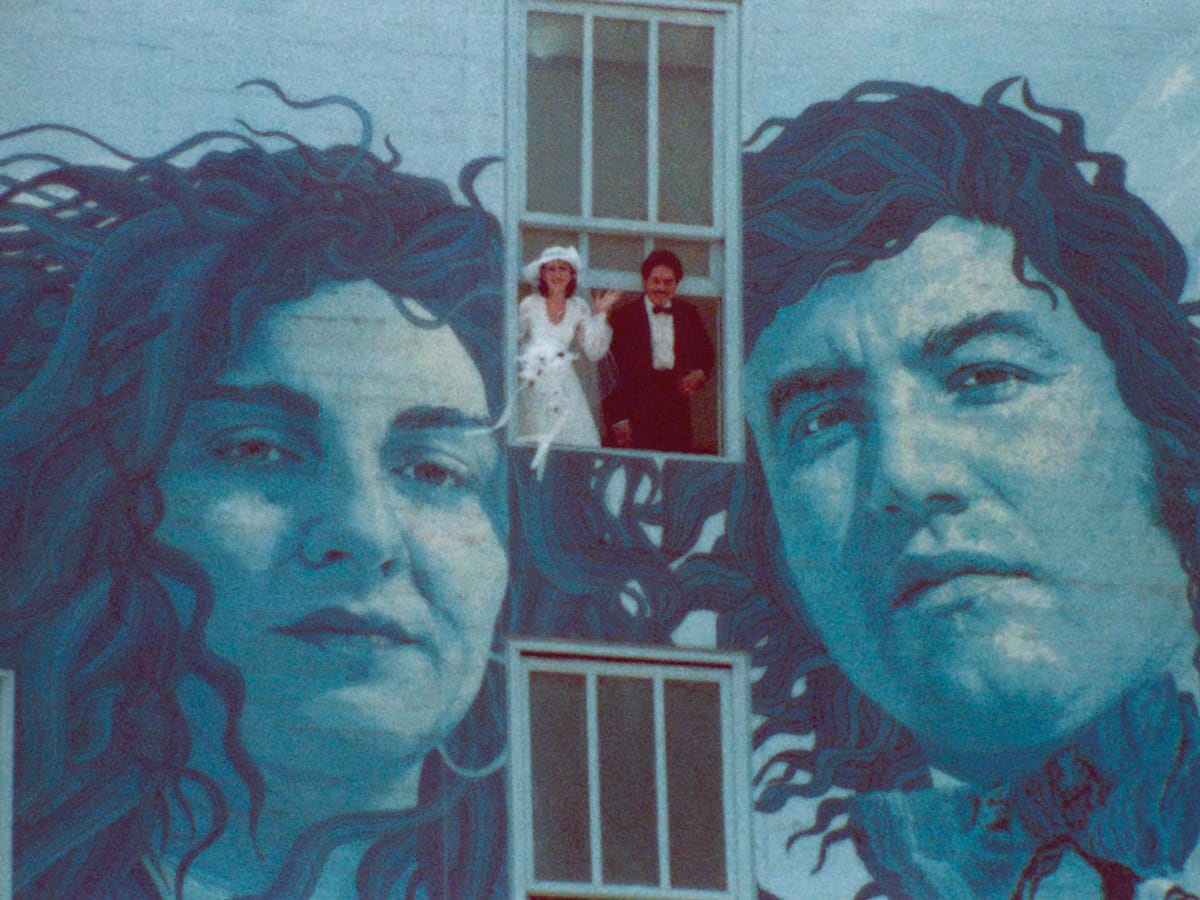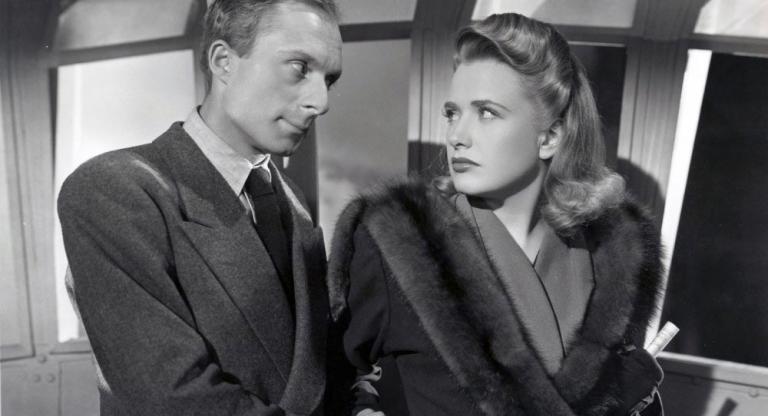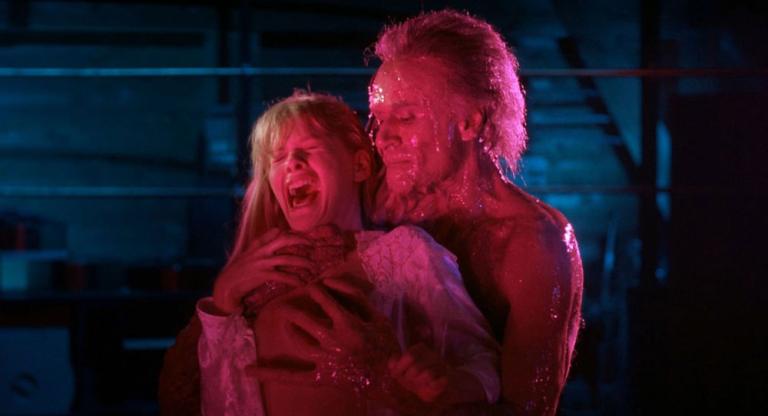“Living, breathing, seething, talking, wailing, murmuring walls,” says Agnès Varda in voiceover. Such are the sprawling Los Angeles murals of Mur Murs (1981), which Varda carefully cataloged upon her return to the city in 1979. Ten years prior, Varda had shot Lions Love (… and lies) (1969) in LA, which features a spacey trio (James Rado and Gerome Ragni of Hair, 1967 and Viva of Warhol Factory fame) musing on sex, stardom, and politics. The film was Varda’s plunge into the American counterculture of the late ‘60s; her camera was a magnet for sunlight and glassy pools, those calm annotations of a city splitting open.
With Mur Murs and Documenteur (1981)—two films conceived and released in direct succession—Varda moves away from the flowery domain of Lions Love to semiotics with a reverie of LA’s murals and graffiti. Varda positions these artworks in sharp contradistinction to the commercial billboards advertising everything-and-nothing that are littered all over the city. Murals sell you nothing, but instead share a certain kind of intimacy with onlookers. They are archives—material sites for exchanging cultural norms, expressions against state violence, repositories for feelings, art for the everyman.
Through hushed voice-over, an uncredited man gives credit to every artist in Mur Murs, at times overtop of Varda’s own narration. This is a film as much about collectivity as individual expression: the Black community of St. Elmo’s boasts a kaleidoscopic mural scene totally distinct from their surrounding locales; the East Los Streetscapers, a muralist art collective, softly soap the walls to keep their colors appearing vibrant; tattooed artists and passersby describe the murals present on their bodies. Communities become entwined and their art anthropomorphized—as Varda points out, “painted walls have ears.” (Mur Murs translates simply to “Wall Walls,” with the film’s untranslated title acting as a pun on “murmurs.”)
Documenteur begins precisely where Mur Murs ends, at an apocalyptic mural depicting the “great earthquake” which would cleave LA from the American continent; Varda’s assessment of the artwork is that “the future is perhaps a wave that will wash us away.” Cut to the future, where Emile (Sabine Mamou, Varda’s frequent editor) and her son Martin (Mathieu Demy, the child of Varda and Jacques Demy) are looking for a new home on the heels of an apparent divorce.
Adjusting to the new realities of being a single mother and working as a typist, Emile eventually happens upon a documentary film crew capturing LA’s murals, who ask that she narrate their film (in reality, Varda narrates Mur Murs and Mamou edits). The feedback loop of art, connectivity, and spatiality in Mur Murs and Documenteur represent a particular sort of generative curiosity which populated Varda’s catalog: one’s attention to visual art emboldens their attention to cinema, and painting and filmmaking meet themselves in newfangled forms.
CONTOURS is a column by Saffron Maeve examining films that thematize the world of visual art: heists, biopics, documentaries, and experimental fare. Maeve also programs a screening series of the same name and premise at Paradise Theatre in Toronto.
Mur Murs + Documenteur screens this Saturday, May 4, at BAMPFA as part of the series “Viva Varda!”





